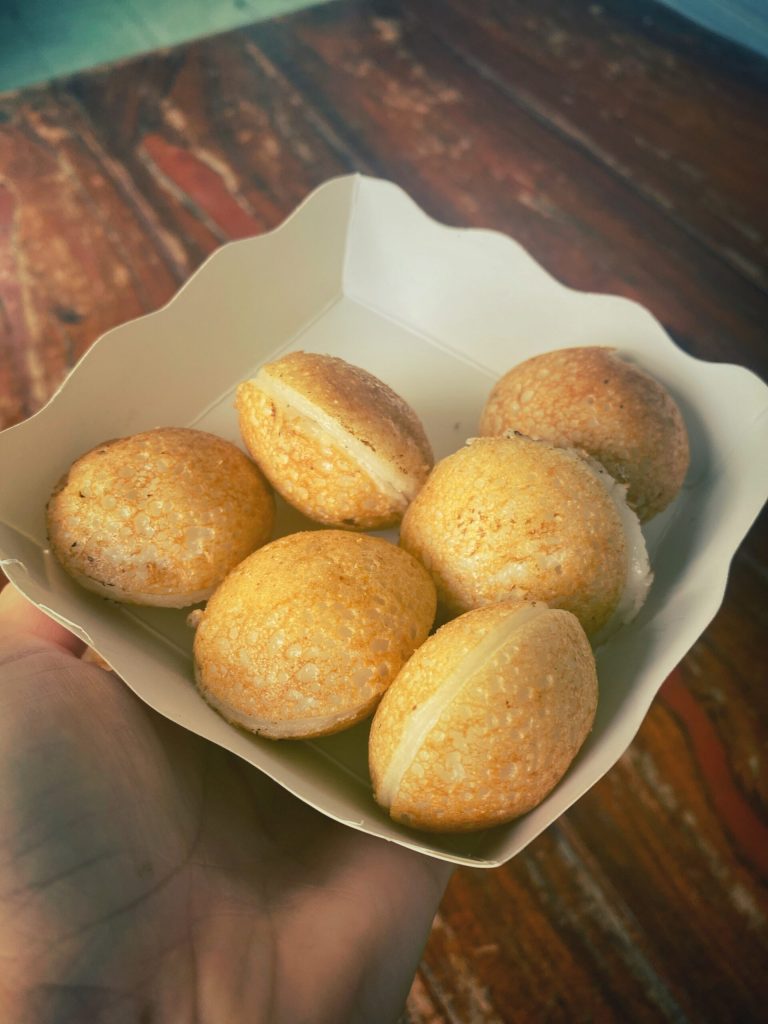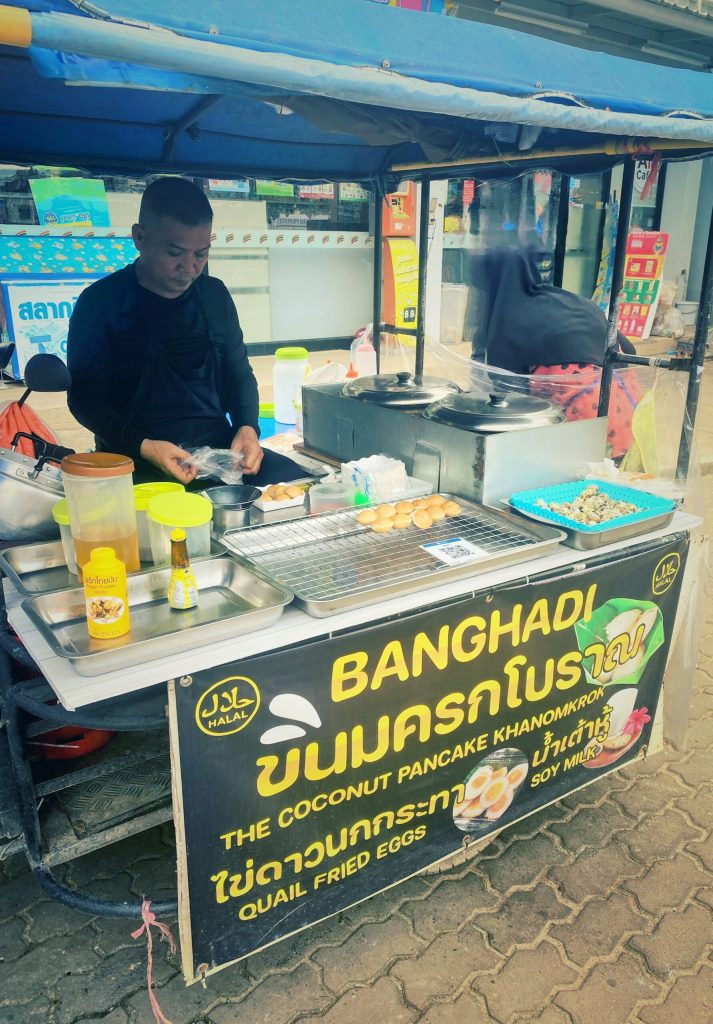Khanom khrok, or small coconut pancakes, are a typical Thai street food snack, prepared in a special cast iron pan with multiple semi-round molds.
A batter made of rice flour and coconut milk, flavored with a bit of salt and palm sugar.
The batter is poured into the molds and cooked until the exteriors become crispy and the interiors start to solidify but remain liquid in the center.
Once cooked, they are paired face to face to keep warm.
Among the most common toppings and additions are tapioca or arrowroot flour, white rice, grated coconut, peanut or corn oil, taro, corn, and green onions, as well as quail eggs.
Khanom translates to candy or dessert, khrok means mortar.
It is a traditional Thai dessert known since the Ayutthaya period, naturally gluten-free.
As you can see in this video, to recreate the recipe at home, you can use a pan for:

- Difficulty: Medium
- Cost: Very cheap
- Preparation time: 5 Minutes
- Portions: 10 Pieces
- Cooking methods: Stovetop
- Cuisine: Thai
Ingredients
- 1.75 oz jasmine rice (cooked)
- 1.75 oz rice flour
- 1 oz palm sugar
- 2 oz coconut milk
- 1 cup water
- 1 pinch salt
- as needed coconut oil
- 2 tablespoons rice flour
- 2 tablespoons palm sugar
- 4 oz coconut milk
- 1 pinch salt
Tools
- 1 Pan Takoyaki
Steps
Blend the ingredients for the outer shell until smooth.
For the filling, mix ingredients in a bowl.
Heat the pan and distribute the coconut oil. Spoon half a tablespoon of the outer batter into each mold and a teaspoon of filling in the center.
Continue to cook until the outer shell is, crispy and lightly golden.
This, and in the video, is the street vendor of Khanom khrok I used to meet every morning in Ao Nang on my way to the beach, during my trip to Ao Nag in October 2024.

Here is my taste during the visit to the floating market in the days dedicated to Bangkok in our trip to Thailand in November 2014:
Similar dishes can also be found in Bangladesh, Myanmar (where they are known as mont lin maya) Laos (khao nom kok), South India (where they are called Paddu, Paniyaram or Gundpongalu) and Indonesia (where it is called serabi)

